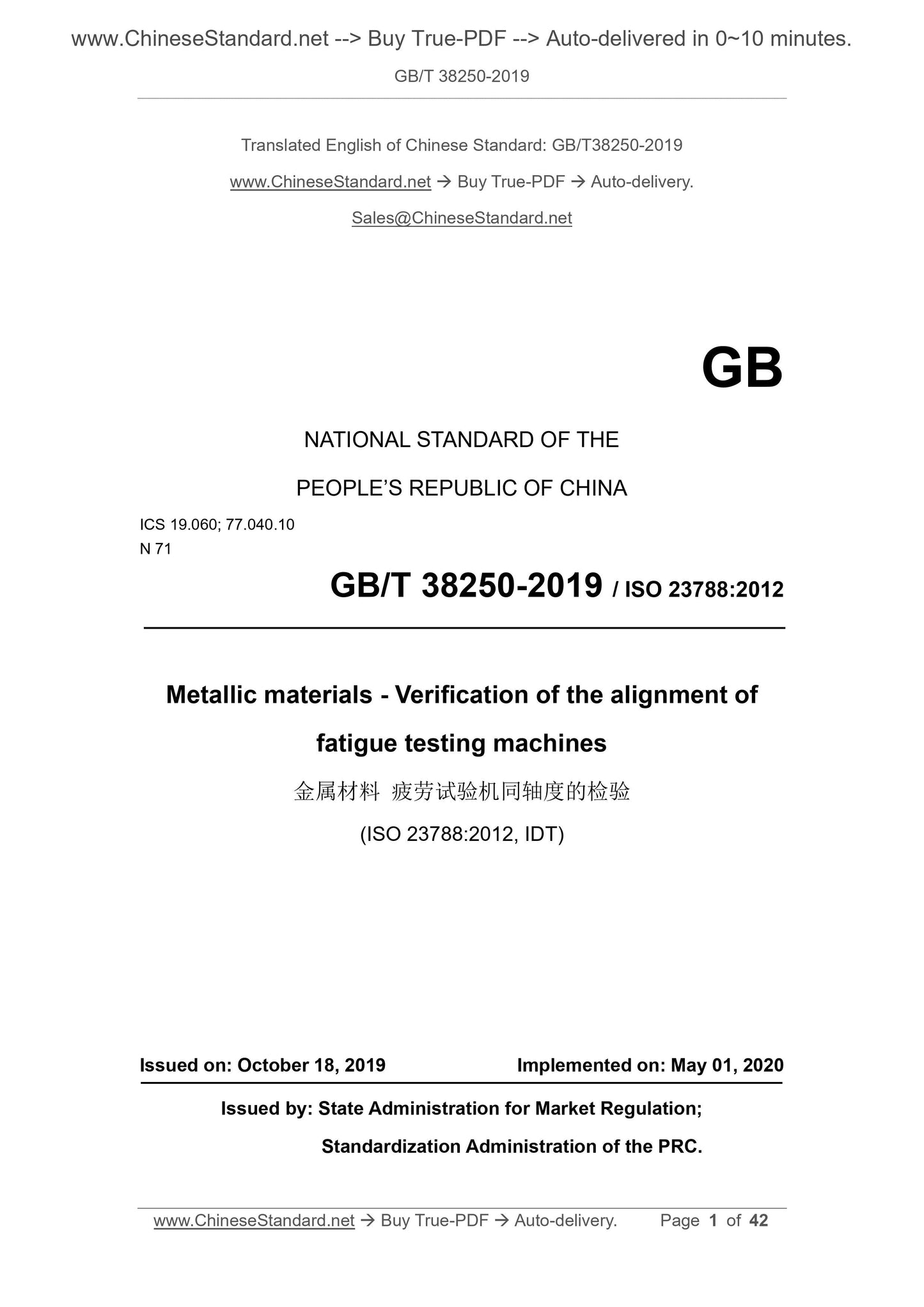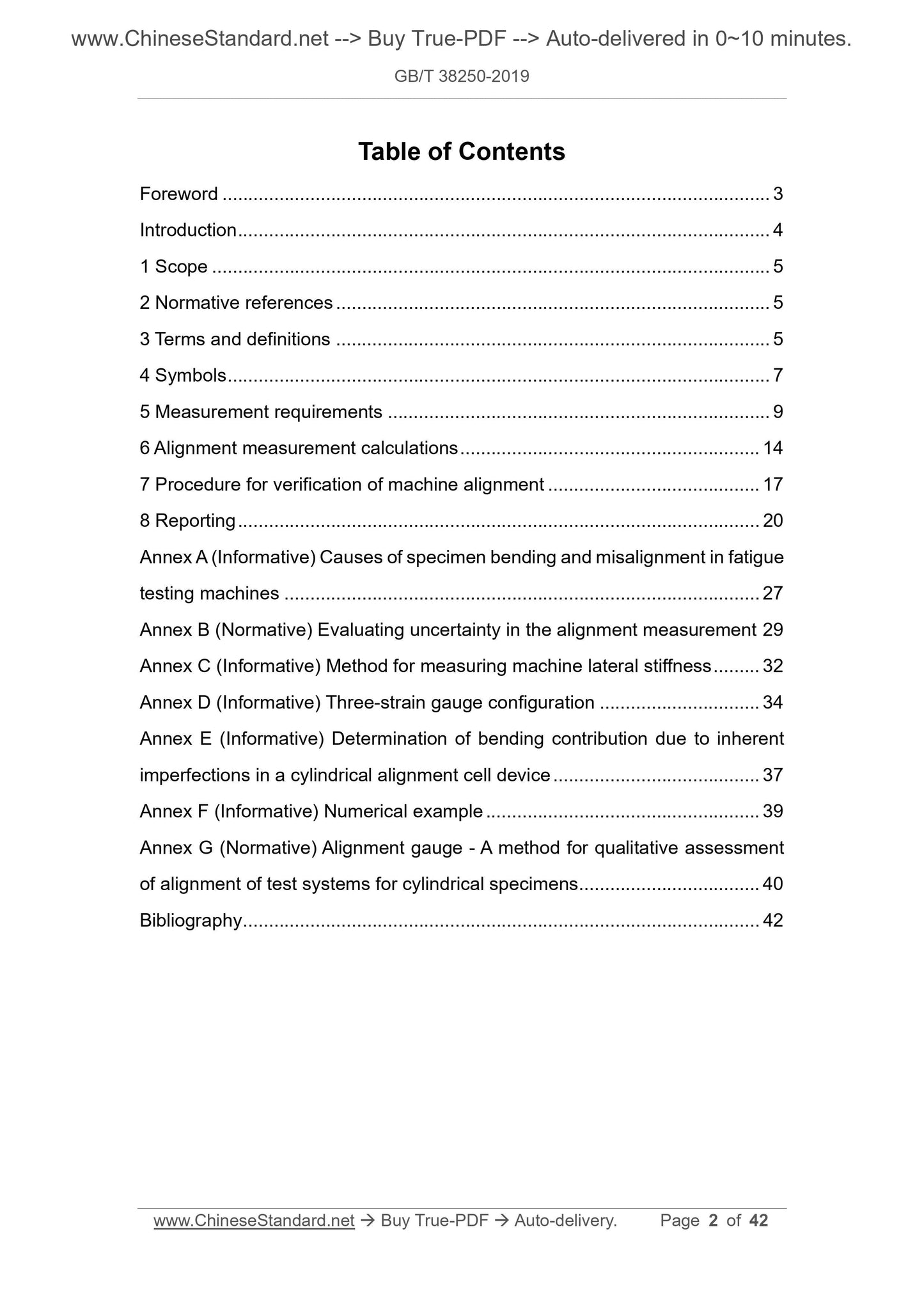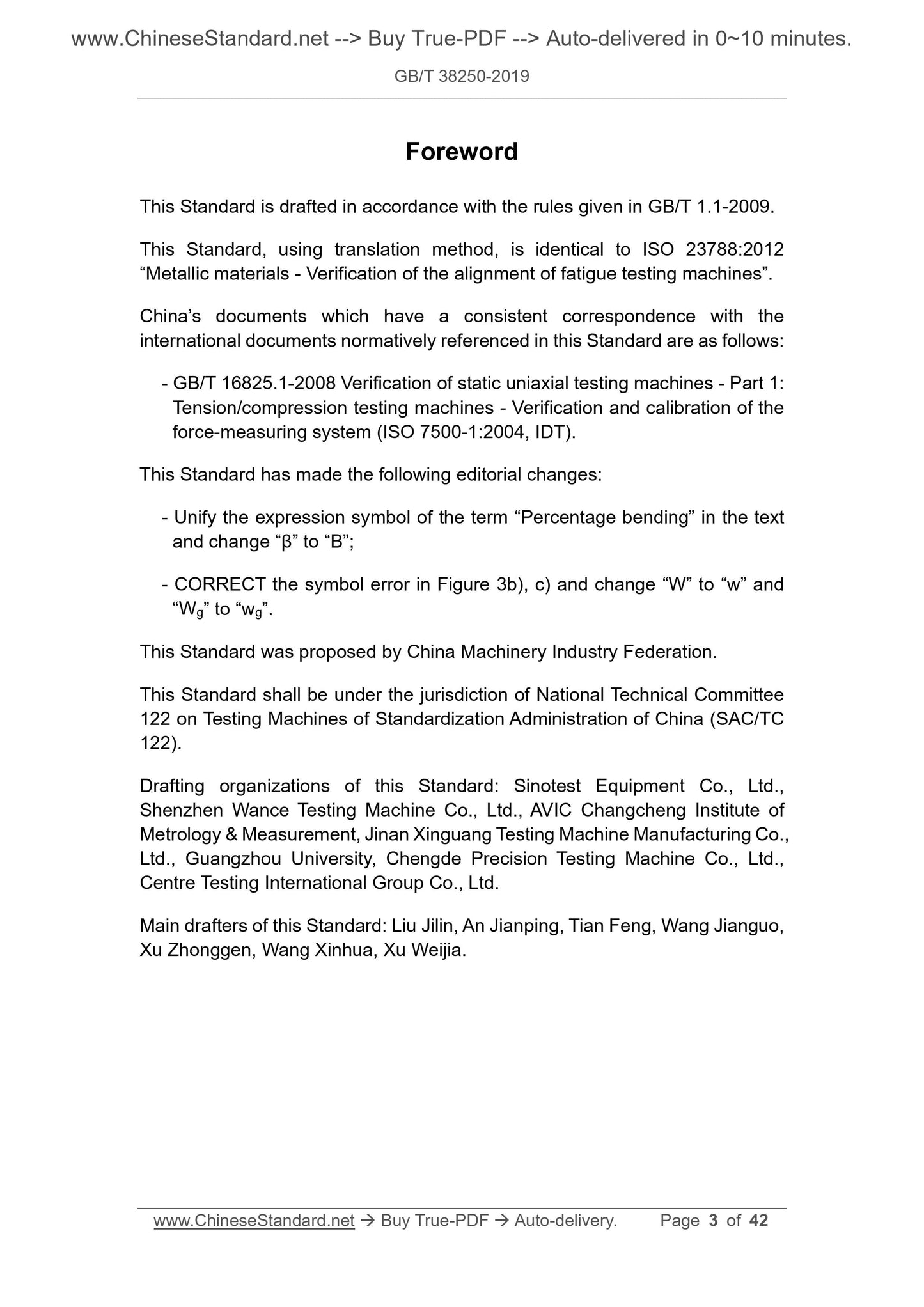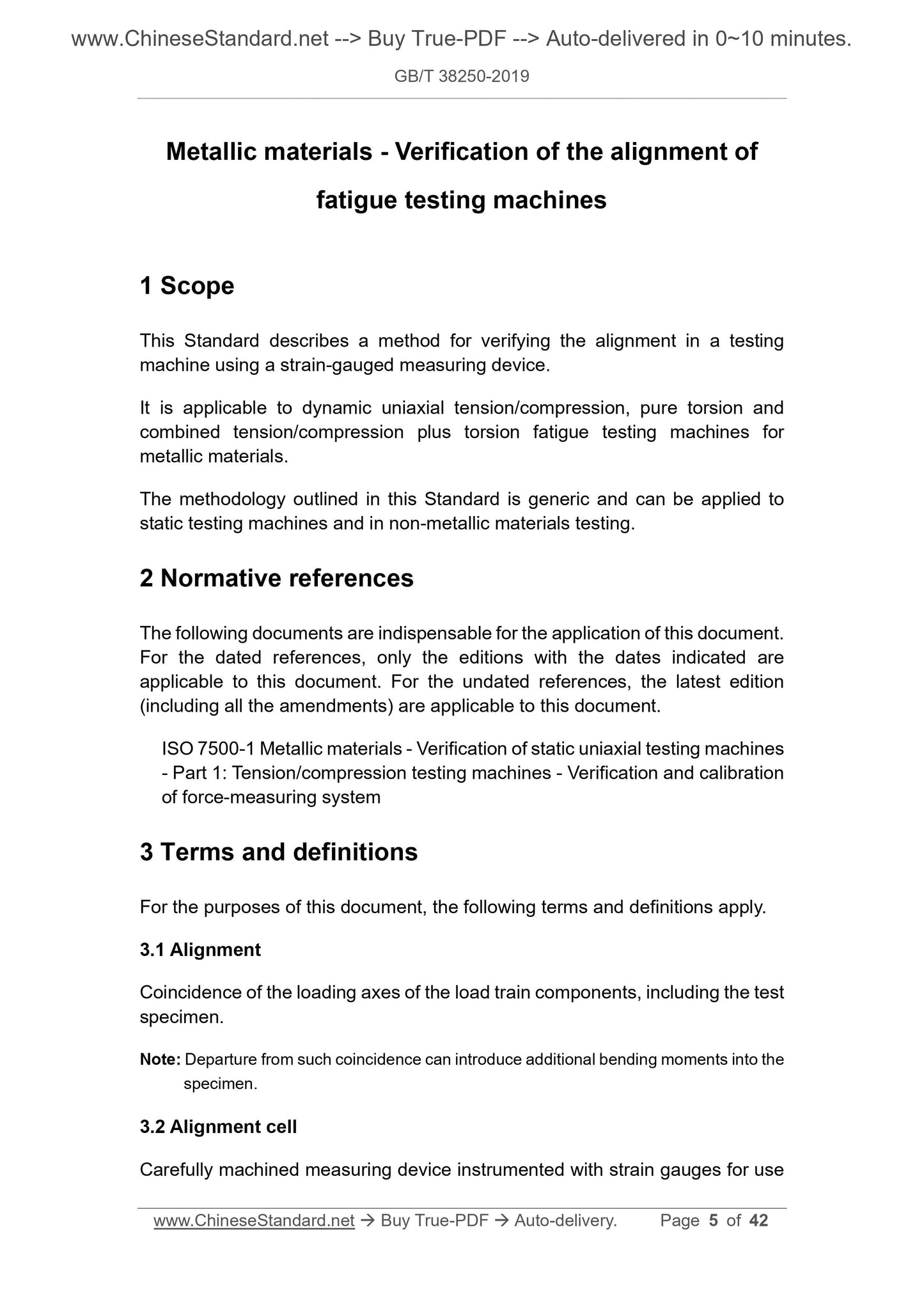1
/
of
4
www.ChineseStandard.us -- Field Test Asia Pte. Ltd.
GB/T 38250-2019 English PDF (GB/T38250-2019)
GB/T 38250-2019 English PDF (GB/T38250-2019)
Regular price
$330.00
Regular price
Sale price
$330.00
Unit price
/
per
Shipping calculated at checkout.
Couldn't load pickup availability
GB/T 38250-2019: Metallic materials - Verification of the alignment of fatigue testing machines
Delivery: 9 seconds. Download (and Email) true-PDF + Invoice.Get Quotation: Click GB/T 38250-2019 (Self-service in 1-minute)
Newer / historical versions: GB/T 38250-2019
Preview True-PDF
Scope
This standard specifies the coaxiality test method for testing machines using strain gauges.This standard applies to dynamic uniaxial tension and/or pressure, pure torsion, composite pull and twist, composite pressure twist and composite tension and compression fatigue of metal materials
Labor test machine.
The methods outlined in this standard are general and can be applied to static testers and non-metallic materials.
Basic Data
| Standard ID | GB/T 38250-2019 (GB/T38250-2019) |
| Description (Translated English) | Metallic materials - Verification of the alignment of fatigue testing machines |
| Sector / Industry | National Standard (Recommended) |
| Classification of Chinese Standard | N71 |
| Classification of International Standard | 19.060; 77.040.10 |
| Word Count Estimation | 30,383 |
| Date of Issue | 2019-10-18 |
| Date of Implementation | 2020-05-01 |
| Issuing agency(ies) | State Administration for Market Regulation, China National Standardization Administration |
Share







